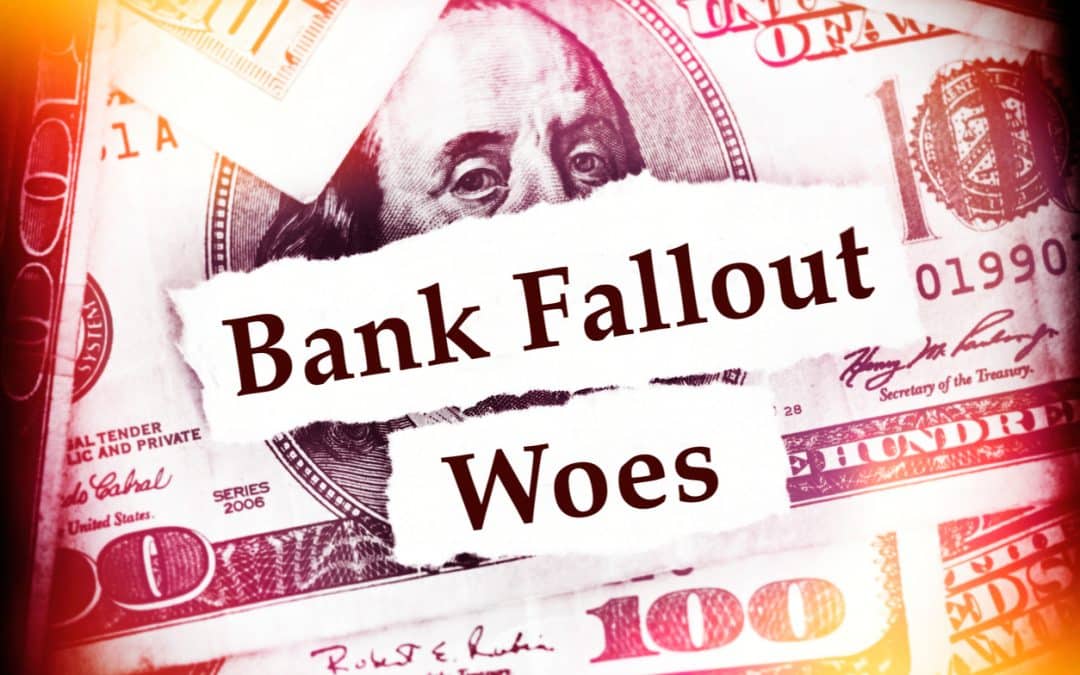Travis Hill is vice chairman of the Federal Deposit Insurance Corporation (FDIC). This article is edited and adapted from a recent presentation at the Mercatus Center entitled “Banking’s Next Chapter? Remarks on Tokenization and Other Issues”
As we consider the changing landscape of banking and payments, we should remain mindful of our core mission of minimizing the risk and severity of disorderly bank failures. In that vein, I’m going to pose three questions for policymakers to consider.
Should External Auditors Issue “Going Concern” Opinions About Banks?
Under U.S. auditing standards, the external auditor of a company is generally required to assess the company’s future prospects as a going concern, and publicly disclose if it concludes it is more likely than not that the company will be unable to meet its obligations when they come due over the next year.
But unlike any other industry, to an unparalleled degree, because of the economic and social costs of bank failures, the U.S. has built an enormous apparatus to minimize the risk of banks failing and a special resolution regime to maximize the likelihood that such failures occur in an orderly way. Meanwhile, a public going concern opinion is often described as the “death knell” for an institution and the “nuclear option” for the auditor.
Today, auditors of stressed banks face a Sophie’s Choice-like dilemma. Auditors do not want to repeat the perceived errors of Silicon Valley Bank (SVB) and Signature Bank, in which an auditor issued clean audit opinions shortly before their failures and is now subject to lawsuits.
But auditors also appear to recognize the impact that publicly issuing such an opinion can have on public confidence in a bank, and do not want to be blamed as the proximate cause of the bank’s failure. So perhaps unsurprisingly, over the last year, we’ve had numerous examples of auditors discussing issuing going concern opinions behind the scenes, and no examples of going concern opinions actually being issued.
The fundamental problems are that bank failures are generally hard to predict up until the very end, and publicly predicting them can be a self-fulfilling prophecy.
To What Extent, if Any, Should Poorly-Rated Banks Have Reduced Access to the Discount Window?
The Federal Reserve fulfills its lender-of-last-resort function by offering ongoing liquidity to banks through the discount window, under terms consistent with the famous Bagehot dictum to lend freely on good collateral at a penalty rate. Banks with poor supervisory ratings, very weak capital ratios, or otherwise deemed to not be in sound financial condition are only eligible to borrow from the discount window on secondary credit, which is typically overnight and applies a higher penalty rate and higher haircuts to collateral than primary credit.
According to the FDIC’s post-failure report, the final nail in First Republic Bank’s coffin was its shift to secondary credit, at which point the bank lacked sufficient liquidity to meet its obligations. The knowledge that this was the potential consequence of a CAMELS downgrade was a regular topic of conversation in the weeks leading up to the bank’s failure.
In addition, more generally, just the potential that a bank might be limited to secondary credit, even if the institution is not actively borrowing from the window, can impact various assessments made by the bank’s auditor, including the bank’s ability to hold securities and its prospects as a going concern.
Which banks get moved to secondary credit at times appears curious. Some banks are poorly rated (and thus ineligible for primary credit) because of compliance or operational weaknesses, without any evidence suggesting a deterioration in financial condition. Perhaps at a minimum, either the Federal Reserve’s presumption that four- or five-rated banks are ineligible for primary credit should only apply when the poor rating is a result of unsound financial condition, or alternatively perhaps supervisors should only downgrade a bank to a composite four or five for reasons related to financial condition.
Meanwhile, in other cases, banks that are not poorly rated get moved to secondary credit, with little information available regarding how such decisions get made, but yet a distressed First Republic remained on primary credit for several weeks until its ratings downgrade.
To What Extent Should the Federal Home Loan Banks (FHLBs) Lend to Struggling Banks?
Anecdotally, it has seemed over the past year that the FHLBs have been quicker to restrict, and less predictable in restricting, lending to banks experiencing stress. I appreciate that the FHLBs are poorly positioned to serve a lender-of-last-resort-type function, and that there are deeper questions regarding the FHLBs’ footprint that are worth asking, but I encourage policymakers to think holistically about the implications of cutting off banks from the FHLBs when stress occurs.
The ultimate costs if the institution subsequently fails are likely to be borne by the FDIC rather than the FHLBs, and it is worth remembering that once a bank has reached that stage, its options to meet liquidity needs are likely to be limited, with all the alternatives potentially also costly to the Deposit Insurance Fund (DIF).
In addition, unpredictability around FHLB access can present challenges for banks and supervisors, for example when establishing and assessing contingency funding plans.
Bank Failures Coda
Putting this all together, one can imagine a sequence of events like the following: a bank experiences an adverse event, resulting in its FHLB cutting off funding, resulting in its primary regulator downgrading its CAMELS ratings, resulting in the Federal Reserve moving the bank to secondary credit, resulting in the bank’s external auditor concluding the bank lacks the capacity to hold its HTM securities to maturity, resulting in the bank’s tangible common equity ratio plummeting, resulting in the external auditor issuing a public going concern opinion, which sparks a loss of confidence in the bank that leads to its abrupt and disorderly failure.
As a practical matter, this final outcome is often avoided because individuals along the line prioritize avoiding an unnecessary bank failure, but we should not assume that will always be the case.
If a bank is insolvent or does not have a viable future, authorities should move swiftly and decisively to put the institution into receivership. But weak banks can and often do survive and recover, and we should be thoughtful in considering policy choices that may further cripple wounded institutions and reinforce the procyclicality of our current system.
















